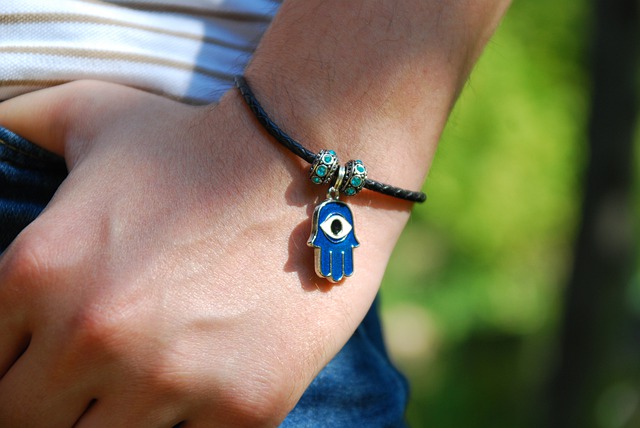During her recent visit to the U.S., Meghan Markle was seen sporting an amulet known as a Hamsa Hand, a good luck charm that allegedly conveys protection and good luck on the wearer.
The Daily Mail is reporting on the necklace worn by the Duchess of Sussex when she visited the United Nations last week. Worth approximately $600 USD, it was the creation of Turkish-inspired jewelry designer Alemdara. The necklace also included an evil eye which supposedly provides spiritual protection.
Markle also wore a Hamsa Hand on several occasions during her 2019 royal tour of South Africa.
She’s not the only one to put her faith in superstition. As the Mail reports, Madonna, Gwyneth Paltrow, Jennifer Aniston, Heidi Klum and Goldie Hawn have all worn a Hamsa charm. Former Love Islander Laura Anderson and EastEnders actress Lacey Turner have gone so far as having Hamsa talismans tattooed on their bodies.
The symbols have become so popular that there’s even an Hamsa Hand emoji.
What exactly is a Hamsa Hand?
The Hamsa Hand symbol originated with the Phoenicians who once wore it as a protective symbol representing an ancient Middle Eastern goddess named Tanit. It was eventually adopted by ancient Sephardic Jews on the Iberian Peninsula who named it the Hand of Miriam, the sister of Moses and Aaron. Islamic cultures call it the Hand of Fatima, daughter of the Prophet Muhammad. In Buddhism and Hinduism the five digits of the hand are believed to represent the chakras.
If the hand is pointing up, it brings protection; if the hand is pointing down it brings blessing.
No matter what Biblical names are attached to it, or whether we choose to wear it with the belief that the hand is of God, it’s still an amulet, the use of which is referred to as “reprehensible” in the Catechism (No. 2117).
People like to argue that using an amulet is no different than wearing blessed objects or praying with relics, but they’re wrong. Yes, we wear blessed objects or keep them in our homes to protect us from evil, but it’s not the object that we believe has the power – it’s the God whose blessing is upon it.
An amulet is believed to possess its own power whereas relics or blessed objects are symbols of the intercessory power to be found in a saint, or in God Himself. As we read in the Catholic Encyclopedia: “Objects dear to Christian piety, such as in the early days the representation of the Good Shepherd, the Lamb, palms, relics of the martyrs, and in later days, pictures of the saints, medals, Agnus Dei’s, etc., were venerated in a relative sense. They were, in the mind of the Church, in no wise thought to have any latent power or divinity in them, or to be calculated to assure, as of themselves, to their possessors, protection against harm or success in undertakings.”
Even wearing the symbol as mere costume jewelry is problematic because the wearing of such a well-known amulet could cause scandal.
This is a fad Catholics are wise to avoid.
© All Rights Reserved, Living His Life Abundantly®/Women of Grace® http://www.womenofgrace.com










